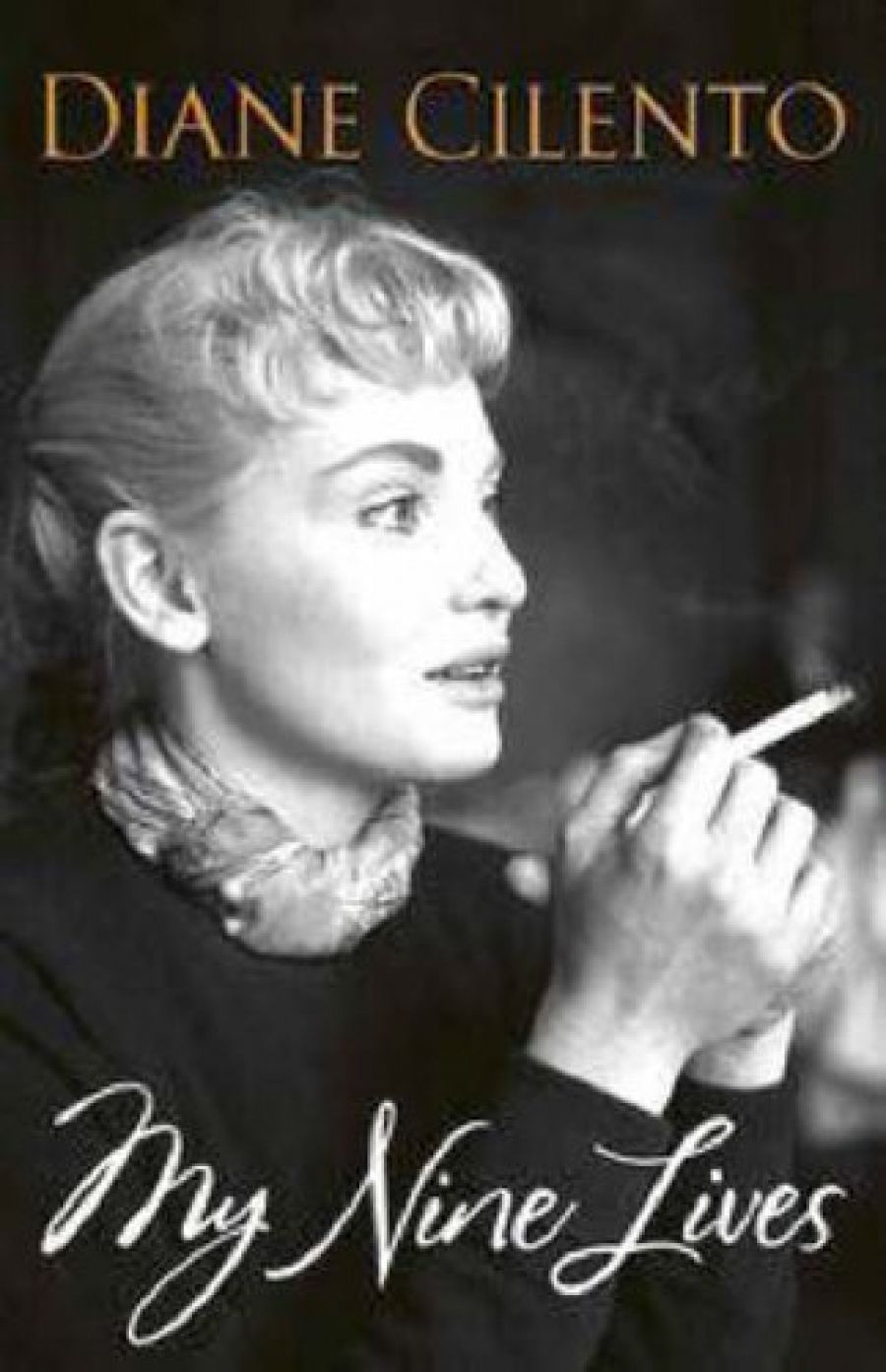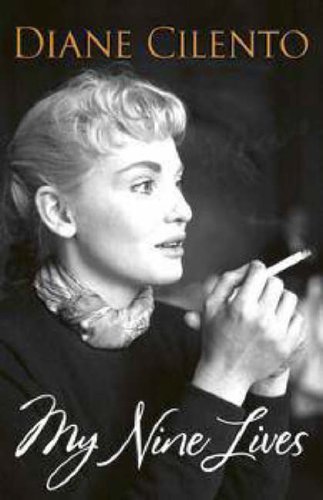
- Free Article: No
- Contents Category: Memoir
- Review Article: Yes
- Article Title: Hooked on Diane
- Online Only: No
- Custom Highlight Text:
Due to some clever product placement (James Bond and wife bashing) Diane Cilento’s Nine Lives have become public property, even before the reader picks up the book. We know it all: she is a member of a celebrated Australian family and made her reputation in some famous movies; she had three husbands, including two well-known ones; she set up a theatre commune in North Queensland. We even know from the gossip columns details that are not in the book: the farcical story of the last days of her third husband, the wonderful Tony Shaffer (worth a hundred Sean Connerys), his London mistress and the Shaffer inheritance. I flick through the book, notice the enthusiastic style, look at the not-quite-thrilling photographs, dip into the quite amusing anecdotes, and study the index in vain for the name Jo Jo Capece Minutolo, Tony’s mistress, whom everyone has been talking about. She has called the book ‘inappropriate’; Connery has called it ‘a crock of shit’.
- Book 1 Title: My Nine Lives
- Book 1 Biblio: Viking, $49.95 hb, 553 pp
- Book 1 Cover Small (400 x 600):

- Book 1 Cover (800 x 1200):

I begin to perk up when I find the name of a long-lost (and secret) lover of mine (you know who you are!) in the index. I have another look at the photographs and find one of Diane dressed up to look like the Virgin for a religious blockbuster movie and discover it was taken while she was on a pilgrimage to Mecca. I give the book another chance and am immediately charmed, first of all by a vivid description of little Diane’s encounter with a camel on a Queensland beach. In London she is translating Pirandello and performing his plays at the new Royal Court Theatre; in Rome she becomes a member of an eccentric family of Roman papal aristos (Volpe de Maele) with fascist connections, white-gloved retainers and a dragon mother-in-law who confines the sick Diane to the mercy of grotesque nuns in a Vatican clinic. By the time she has divorced Sean and plunged into the world of New Age Gurdjieffian Sufism, I am hooked.
Diane is a great believer in the mundane and cosmic effects of coincidence, so it helps to discover parallels between her (fabulous) life and my (less fabulous) one. Diane and I are almost exactly the same age; we shared the same Australian dreaming (the beach); we left home and found fortune (and fame for her) in Britain; disenchanted with our limited beach dreaming, we sought greater enlightenment, she into Orientalia, myself into Africana; we studied and joined communes in broken-down English country houses; we fled dull Europe, Diane to the Middle East, myself to West Africa to research exotic communities; while she was embarking on a strenuous eight-day Sufi retreat, I was enduring twenty-four hour purification ceremonies in deepest Africa. Next we both set up theatre communes (mine in Italy, Diane’s in North Queensland). She and I each had three partners during this time; Diane married one Scot (Connery), one Italian (Volpe) and one English (Shaffer); I had one Scottish, one Italian and one English.
Diane had more men in her life than these imperfect husbands – never lovers, however, for this is a book written for her children and grandchild, and not for the prurient. She had several mentors, whose influence on her was infinitely deeper than that of her husbands. There was Yat Malgrem, who taught the gauche Australian the dynamics of ‘weight, through penetratrion of space, the kinetics of time and the motion of flow’ and turned her from a starlet into a serious actor; Ralph Laban, the time and motion man, showed her the importance of inner attitudes – stable, mobile, near, remote, awake and adream. J.G. Bennet, her neighbour, introduces her to the thrilling world of the Gnostic tradition of Gurdjieffian Sufism, and Diane discovers the whirling dervishes; and Hasan Shushud Konevi, a direct descendant of medieval sages ‘whose intense black eyes could look into the most buttressed heart with ease’, teaches her mystical breathing patterns.
Eventually, she meets the man of her dreams at a lunch of ‘unrivalled dégustation’ in London. This is the charismatic Turkish guru and society chef, Bulent Rauf, grandson of Ismael Pasha, vice-regent of Egypt, and former husband of Princess Faiza, sister of King Farouk, now married to a descendant of the English Norman kings. Bulent inspires Diane to become a devotee of the mystic Muhyidden Ibn Arabi, and together they travel to Turkey to make a film on matriarchy. ‘My idea was to show how Cybele, the Queen of the Hittites, Diana of the Ephesians and the Virgin Mary may have turned the feminine force into the whirling dervish “brides”.’ She also makes a film incorporating Buckminster Fuller’s ideas. My admiration for Diane now knows few limits.
It is the charismatic Bulent Rauf and Tony Shaffer who encourage her to set up Karnak, her theatre commune, which would be a fusion of all her ideas of spiritual awareness and performance. Bulent teaches the communards the works of the medieval Muslim mystics. Tony teaches film and theatre, and buys a restaurant in Port Douglas, inventing amazing food and cocktails, and writing his farces and screenplays. The Williamsons and the Helfgotts and Jane Rutter come to help.
The author of this entertaining memoir is clearly a sincere, adventurous spirit, if somewhat gullible in the face of charlatans and exotic ideas. Shaffer provides an element of farce in all his appearances, right up to the end. A short time before his death, Diane discovers the mistress who has been lurking in his Chelsea flat for some years. An American, she bears a name that links her to the Neapolitan Canosa princes, Capece Minutolo. Irma Capece Minutolo, I recall, was surely the name of the Italian diva who married the exiled King Farouk. And Diane’s master, Bulent Rauf, had been married to Farouk’s sister. In this final comic, if not cosmic, coincidence we find Diane once more on the world stage, or at least in the wings.


Comments powered by CComment